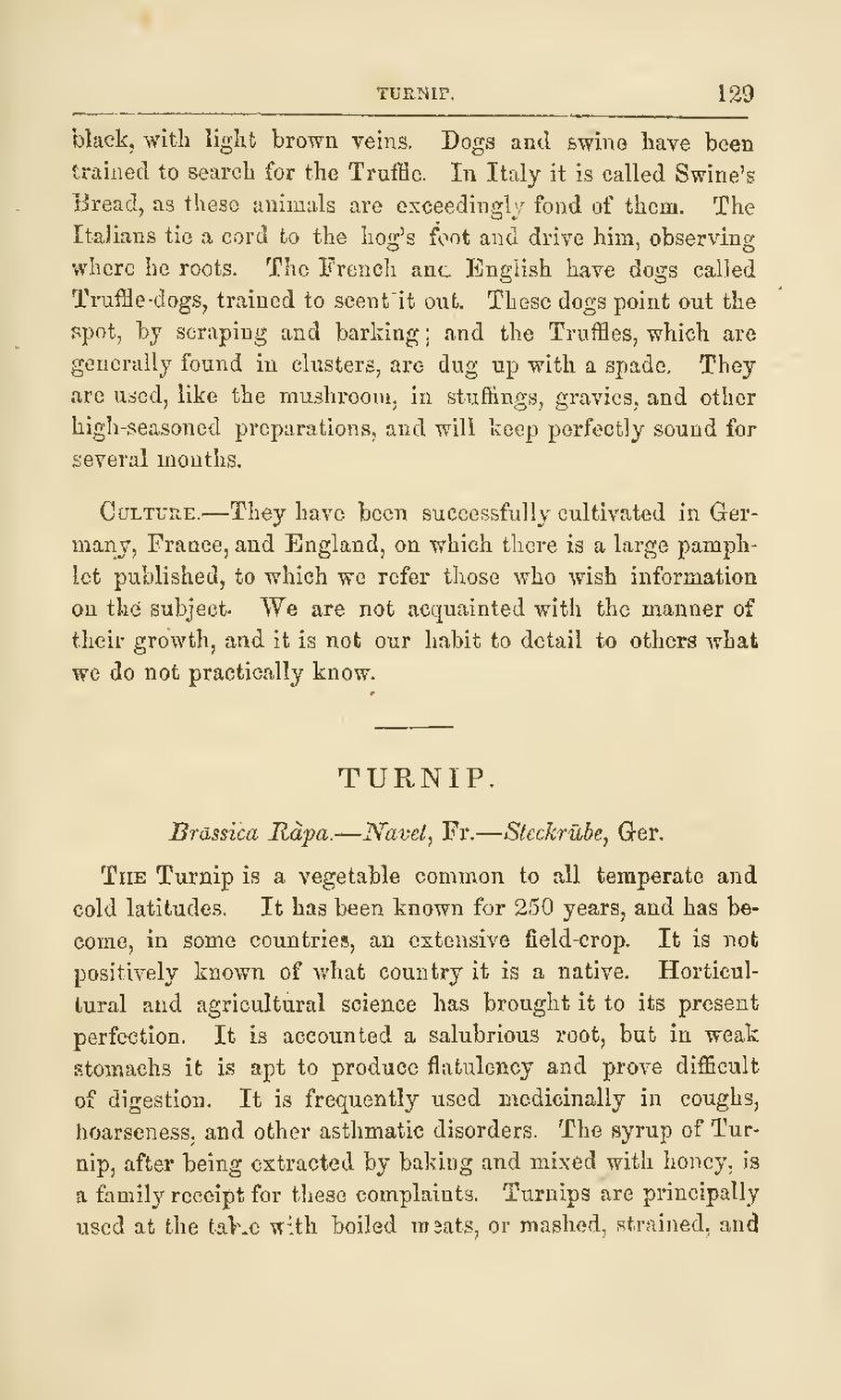black, with light brown veins. Dogs and swine have been trained to search for the Truffle. In Italy it is called Swine’s Bread, as these animals are exceedingly fond of them. The Italians tie a cord to the hog’s foot and drive him, observing where he roots. The French and English have dogs called Truffle-dogs, trained to scent it out. These dogs point out the spot, by scraping and barking; and the Truffles, which are generally found in clusters, are dug up with a spade. They are used, like the mushroom, in stuffings, gravies, and other high-seasoned preparations, and will keep perfectly sound for several months.
Culture.—They have been successfully cultivated in Germany, France, and England, on which there is a large pamphlet published, to which we refer those who wish information on the subject. We are not acquainted with the manner of their growth, and it is not our habit to detail to others what we do not practically know.
TURNIP.
Brassica Ràpa—Navet, Fr.—Steckrübe, Ger.
The Turnip is a vegetable common to all temperate and cold latitudes. It has been known for 250 years, and has become, in some countries, an extensive field-crop. It is not positively known of what country it is a native. Horticultural and agricultural science has brought it to its present perfection. It is accounted a salubrious root, but in weak stomachs it is apt to produce flatulency and prove difficult of digestion. It is frequently used medicinally in coughs, hoarseness, and other asthmatic disorders. The syrup of Turnip, after being extracted by baking and mixed with honey, is a family receipt for these complaints. Turnips are principally used at the table with boiled meats, or mashed, strained, and
